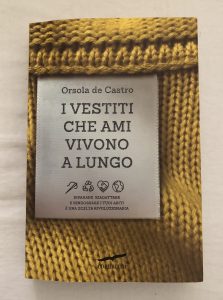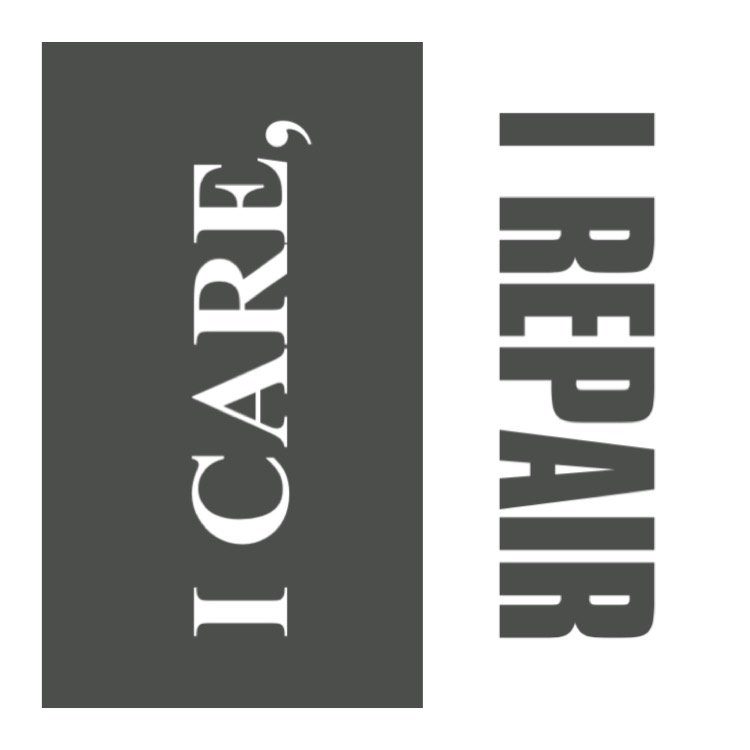Starting to write today, two related things come to mind, even if they happened in different periods of my life (but everything is interconnected for me); the first, and which I already mentioned in the last May interview with Orsola de Castro, that my first direct contact with an ethical brand was in 2008, while I was attending an environmental journalism course in Rome. The brand was From Somewhere, founded by Orsola de Castro and her husband Filippo Ricci in 1997, it was based on upcycling and I still remember the love at first sight with certain items that Ricci brought us to view.


The second thing I think is that opening the blog, about ten years later, one of the first things I came into contact with was Fashion Revolution, a movement founded by Orsola de Castro and Carry Somers in the aftermath of the Rana Plaza tragedy, which I joined immediately and which I often talked about here on eco-à-porter, presenting its manifesto and fanzine, including # 2 which was entitled ‘Loved Clothes Last‘ or a declaration of love for those clothes that last because of excellent materials and finishes or because we have repaired them a lot of times or because we have transformed them into something else, even more unique and precious.
That fanzine has become a book written by Orsola de Castro, with the Italian title of ‘I vestiti che ami durano a lungo’ (‘Loved Clothes Last. How the Joy of Rewearing and Repairing Your Clothes Can Be a Revolutionary Act ‘published by Penguin Books) and comes out today March 11, published by Corbaccio.

Something that began for me more than 12 years ago, leads to this piece I write after drinking the book literally, because there are almost 300 pages that flow which is a pleasure, with many tips, advices but also anecdotes that go around to the practice of reusing clothing and accessories, intertwined with useful and at the same time disheartening data and information of how much the fashion industry, a 2400 billion dollar business, is hurting humans and the planet.
And if it is true that governments, organizations, corporations and so on make big decisions, it is equally true that it is we consumers with our choices and gestures who shift the balance on change in a not indifferent way, it is we consumers, in this case, who have to deal with an “incitement to use our clothes – and the tools that make them last longer – like armor, making the revolutionary gesture of repairing them”.
The idea of de Castro’s book is to open our closet by seeing, as well as looking; how many clothes and shoes and bags have we accumulated over time, often just for the compulsive pleasure of owning something new, which then, in reality, we have perhaps worn once or maybe not even that one, which sometimes we still find the tag attached? How many times have we bought out of desire, which is different from love, a concept explained very well in the book and which I myself thought of while reading: as in our relationships, there is that fulminating passion, perhaps all sex, which then goes off like this , how it began and then there is love, the story, the one that becomes part of our life and that we want to extend as much as possible, live every moment, possess it, consume it, keeping it with us forever.


The same happens with clothes, right? “We weave relationships”, the threads make up not only the materials of our clothes but also our thoughts and can be, are, memory, that of a day that will never return, that of a loved one who has disappeared, that of a place left in the heart, that of a never forgotten love.
So, in order not to play the game of a “monopolistic, constrictive and non-inclusive” system, which imposes a model of bulimic consumerism, in which profit reigns at all costs and in which there is no care or respect, not only for the dress itself but also for those who produce it, we oppose the revolutionary and political gesture of mending or exchange or gift, to preserve and restore life to something that would otherwise be lost forever, filling the landfills or ending up burned in the incinerator or, again, sold en bloc to textile sorting or recycling companies that export it, most of it to Africa, “creating chaos in local economies and infrastructures, and making themselves partly responsible for the rampant disappearance of craftsmanship that it cannot compete with very low prices and with the fact that Western clothes are more coveted ”.
With the quote from the textile artist Celia Pym “I do not see the purpose of invisible patches”, Orsola de Castro introduces us to the most varied repair techniques, from mending, which “is experience, life, time spent” to patches and decorations, from the ‘boron’ style patchwork (a type of Japanese fabric made from the leftovers of kimonos) to the hems left deliberately frayed because “the damage of use is the symbol of a personal journey, the scars of our everyday life”.
And then the instructions for washing the garments, learning to understand the symbols and certain tricks to wash less and better, the composition of the materials, strengths and weaknesses of each one, because also the knowledge of the raw material, its origin, its production path as well as its end of life, it can help us understand how to treat our clothes to make them last longer.
In short, each page is a discovery, with even amusing anecdotes such as those on ‘playing with jeans’ (but I leave you the pleasure of reading it for yourself) and moments of reflection, for example in the paragraph dedicated to the inhuman conditions of textile workers , such as those who lost their lives or were injured in the Rana Plaza collapse in Bangladesh:
“We should also experience the denial of human dignity as toxic to our body and soul, the chemistry that is transmitted (both physically and metaphorically) in the act of sewing a garment, the conditions of that workforce”.
Ok, I stop here but first I can’t help but thank Orsola de Castro for taking pity on us “disaster” not worn for manual work; I, despite having a fabulous mother who knows how to do everything more (as well as being a true pioneer of upcycling, I should dedicate a separate article to her!) and two sisters, one of whom is a seamstress and designer and the other is good like mom, I’m really clumsy. But I delegate and in any case, now, I felt like taking a sewing course! And then I can write, at least I think, so I can talk to all of you and spread the revolutionary idea of this book, which is that “the most sustainable garment ever is the one you already own” and therefore it is worth doing everything possible to extend its life. Which is ours too.


![Mono[PA6] by Freitag, a prova di economia circolare](https://eco-a-porter.com/wp-content/uploads/2024/05/freitag_monopa6_hero_master_16zu9_fin_01.2_0-218x150.jpg)













